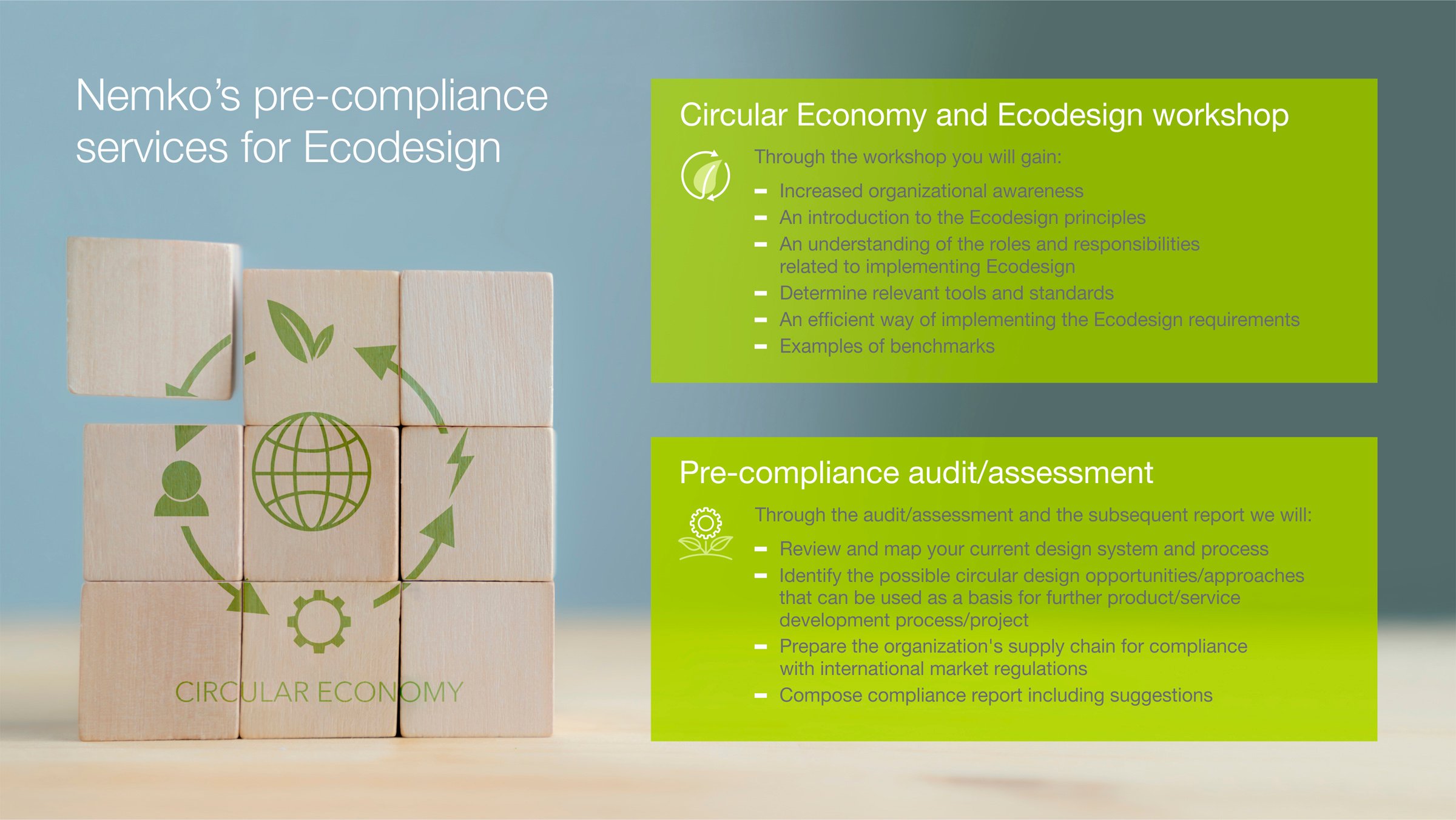- Services
- Industries
- Automotive
- Battery
- Building inspection
- Fire alarms system testing
- Household appliances
- Installation materials
- Industrial machinery
- IT & audio video
- Laboratory, test & measurement
- Lighting equipment
- Maritime, oil & gas
- Medical & healthcare equipment
- Military & aerospace product testing
- Wireless & telecom
- Resources
- About
- Blog
- Events
December 20, 2022
Ecodesign requirements to drive sustainable product development
Written by: Nastaraan Vadoodi
The EU has made sustainable products the norm by imposing Ecodesign requirements on products and will make documentation of environmental impacts mandatory from the end of 2022.
In this blog post, we have listed everything we think you should know about sustainable product development.
Background
In this blog post, we have listed everything we think you should know about sustainable product development.
Background
The European Commission has introduced a new initiative to support the development of sustainable products across Europe: Ecodesign Regulation for Sustainable Products (ESPR). Ecodesign means incorporating environmental criteria into the design of a product, supplementing the current economic and technical focus of products and services design.
With this new initiative, Ecodesign requirements will be imposed on any product marketed in Europe in the future and not only for the electrical and electronic products covered by the Energy-related Products (ErP) Directive today. Documentation on environmental impacts (i.e. digital passports) on any product category will become mandatory. The self-declared environmental or sustainable performance will be banned from 2024.
Below is a list of the main focus areas of sustainability regulation:
- Durability, reliability, reusability, upgradability, reparability, and the possibility of maintenance and refurbishment
- Avoid the presence of substances of concern
- Energy use or energy efficiency
- Resource use or resource efficiency
- Recycled content
- Possibility of remanufacturing and recycling
- Possibility of recovery of materials
- Lifecycle environmental impacts, including carbon and environmental footprint
- Preventing waste, including packaging waste
The design approach for sustainable products
EU analysis shows that, on average, 80% of products' environmental impacts are determined at the design phase. During the design phase, product designers have the flexibility to innovate products to meet performance objectives for safety and sustainability throughout the product’s life cycle. Therefore, identifying and considering environmental impacts is a vital part of the product design process.
Going for a more sustainable product design system means changing the current linear product design system into a circular one (per the images below). The target is to avoid the take-make-use-dispose approach, increase resource efficiency, prevent pollution, mitigate climate change, and enable a circular economy.
Traditional linear product design system (take-make-use-dispose approach)

Circular product design

How can Nemko help
Nemko's Ecodesign services are aligned with the circular economy frameworks and cover all the different life stages of the product through the use of the latest international standards.
It will support your business in establishing systems, product methods and making products meet requirements for Green Procurement and your customers’ expectation for a greener tomorrow.

The techniques and specific approaches can be adjusted to fit the particular industry, product category and organisation.
Learn more about Nemko’s Ecodesign pre-compliance services
Contact Nemko
If you have questions or concerns, Nemko is always here to help you. Contact your local Nemko office or use the 'Contact us' form.
